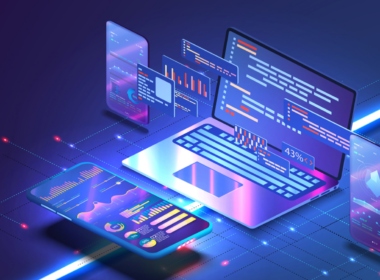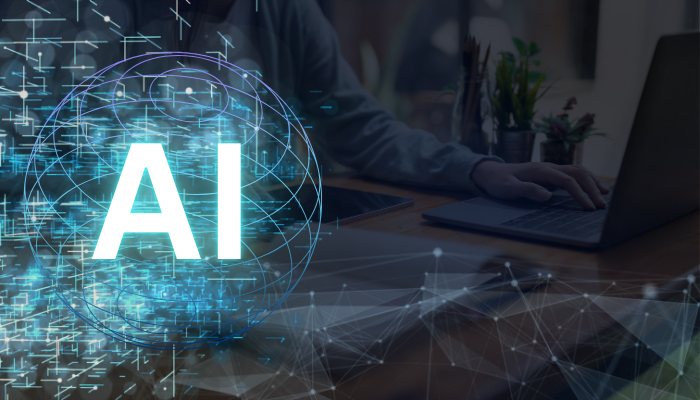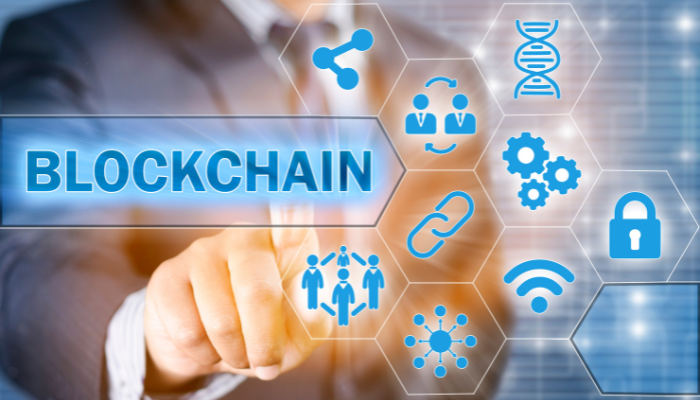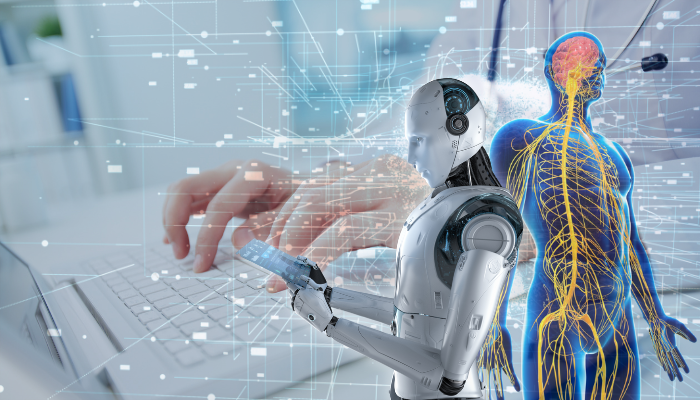Imagine having a classroom where every lesson adapts to your students’ needs without you lifting a finger.
This is becoming a reality, thanks to AI. It’s not about replacing teachers, but rather giving them the tools to teach smarter and more effectively. With AI, teachers can offer personalized learning experiences, track student progress in real-time, and spend more time on what matters most—teaching.
For students, AI can provide customized lessons that adjust to their pace, identify areas where they need more help, and provide instant feedback. It’s like having a personal tutor available 24/7. Whether in the classroom or online, AI is making education more accessible and impactful for both students and teachers.
In this blog, we’ll explore how AI is quietly changing the way education works, the challenges it brings, and what the future of AI in education might look like.
The Transformative Role of AI in Education
AI is changing how education functions at its core. By augmenting teaching roles, enhancing student learning experiences, and creating interactive environments, AI is playing a central role in the evolution of modern education.
1. Augmentation and Automation of Teaching Roles
AI doesn’t replace teachers—it supports and augments their roles by taking over routine tasks, giving educators more time to focus on meaningful interactions with students. Some examples of how AI is assisting teachers include:
- Automated grading systems: AI can assess assignments, quizzes, and exams, saving teachers valuable time.
- Curriculum design: AI can help educators create customized lesson plans based on students’ learning patterns and needs.
- Administrative tasks: From scheduling to attendance tracking, AI simplifies various administrative functions, allowing teachers to concentrate more on teaching.
2. AI’s Ability to Enhance Learning Experiences
AI empowers students by offering a more personalized and dynamic learning experience. With AI tools, students can learn at their own pace, and their learning experience becomes uniquely suited to their individual needs.
- Adaptive learning platforms: AI can assess student progress in real-time and adjust the content accordingly, ensuring that each student gets the right level of challenge.
- Instant feedback: AI can provide immediate feedback to students, helping them understand their mistakes and improve continuously.
- AI tutors and assistants: These tools offer extra support to students who need help outside of class hours, available whenever they need assistance.
3. Creation of Interactive and Immersive Learning Environments
AI opens the door to interactive and immersive learning experiences that make education more engaging and effective.
- Virtual and augmented reality (VR/AR): AI-powered VR and AR tools offer immersive experiences where students can interact with historical events, scientific simulations, or virtual labs, providing a hands-on approach to learning.
- Gamified learning: AI can create educational games that adjust difficulty levels based on the learner’s progress, keeping them engaged and motivated.
- Simulated environments: AI-powered simulations allow students to practice skills in a safe, controlled environment—ideal for medical, engineering, and technical education.
4. Personalized Learning through AI
AI is transforming the way education adapts to individual student needs, creating an experience that’s uniquely suited to each learner. Here’s how:
- Customized Lesson Plans and Assessments: AI allows for the creation of tailored lesson plans that adjust in real-time to match the pace and learning style of each student.
For example, platforms like Knewton use AI to design dynamic, customized curricula that evolve based on a student’s progress and performance, ensuring that no one is left behind.
- AI-Driven Analytics for Student Engagement: AI helps track student engagement by analyzing their interactions, responses, and behavior. Tools like Socrative use this data to identify students who might need more attention or support, allowing teachers to focus on those who are struggling and adjust teaching strategies accordingly.
- Tailored Learning Paths for Diverse Learning Needs: AI makes learning accessible for all students, including those with learning disabilities or special needs.
For instance, DreamBox provides adaptive learning environments that adjust in real time to cater to different levels, ensuring that each student is challenged but not overwhelmed.
5. Immediate Feedback and Evaluation
AI’s ability to offer instant feedback is revolutionizing how students learn and grow. Here’s how it’s improving assessments:
- Real-time Problem-solving Assessment: AI-driven platforms can assess student responses instantly, providing immediate feedback to problems or quizzes. Tools like Socrative or Kahoot use AI to give students instant insights into their mistakes, helping them learn from errors and improve continuously.
- AI’s Role in Providing Detailed Feedback: Unlike traditional assessment methods, AI can provide more detailed and actionable feedback. For instance, AI systems can pinpoint specific areas where a student is struggling, like grammar errors or conceptual misunderstandings, and offer tailored exercises to address these gaps.
- Automating Grading and Assessments: AI automates grading for multiple-choice tests, essays, and even open-ended questions, which saves teachers considerable time.
For example, Gradescope uses AI to help instructors grade exams and assignments more efficiently, reducing workload and ensuring consistency in assessments.
6. AI-Powered Student Support and Engagement
AI is also enhancing student support and engagement, offering personalized assistance when needed most.
- Use of Chatbots and Virtual Assistants: AI-powered chatbots like Woebot provide 24/7 support for students, answering questions, offering study tips, or helping with personal issues. These virtual assistants offer a safe space for students to seek help anytime without feeling judged.
- Tracking Student Progress and Well-being: AI tools can monitor a student’s academic progress, attendance, and even emotional well-being, identifying early signs of burnout or disengagement.
Platforms like Cerego track cognitive load, ensuring students don’t get overwhelmed and helping teachers intervene early when students are falling behind.
- AI’s Influence on Motivation and Learning Outcomes: AI can drive motivation by adapting challenges to match a student’s level, ensuring they stay engaged. For example, Duolingo uses gamified elements and AI to motivate students in language learning, offering rewards, levels, and personalized challenges that make learning fun and effective.
What’s AI up to in education? Spoiler: It’s changing everything.
Don’t miss out—find out how it’s shaking up academic processes!
While AI is making impressive strides in enhancing personalized learning, feedback, and student support, it’s crucial to consider the broader impact it has on the education system. As with any transformative technology, AI comes with its own set of challenges and ethical considerations.
Let’s explore some of these key concerns.
Challenges and Ethical Considerations Of AI in Education
The integration of AI into the education system holds great promise, but it also comes with its fair share of challenges. Let’s break down some of the major hurdles that need to be addressed:
Challenges of AI in Education
Alright, you’ve probably heard a lot about how AI is changing education, but let’s be real—it’s not all smooth sailing. You must be thinking, “AI sounds great, but what’s the catch?” Well, just like that coffee you need to power through the day, AI comes with its own set of challenges.
From data privacy concerns (because who wants their personal info floating around?) to the bias in AI algorithms, it’s clear that AI isn’t perfect. And hey, we love tech, but there’s a risk that too much reliance on AI could make classrooms feel less human.
Oh, and not every student has equal access to AI tools, which could leave some behind. Here’s a quick rundown of the real challenges AI is facing in education:
1. Data Privacy and Security Concerns
AI systems rely heavily on collecting and processing large amounts of data, including sensitive student information. This raises concerns about privacy and security. Educational institutions must take extra precautions to protect student data from cyber threats.
The use of AI-powered platforms that track student behavior or academic progress demands strict adherence to data protection laws to prevent unauthorized access and misuse of personal information.
2. Bias in AI Algorithms
AI algorithms are only as unbiased as the data they are trained on. If the data used to train these systems includes biases, those biases will inevitably be reflected in the AI’s decisions.
For example, an AI-based grading system that is trained on biased historical data might unfairly assess certain groups of students. This makes it crucial for AI developers to ensure diverse, representative datasets and to regularly audit their systems for fairness.
3. Over-reliance on Technology
As AI takes on more tasks in education, there’s a risk of becoming overly dependent on technology. While AI can assist in personalizing learning and automating administrative tasks, over-reliance on AI might limit students’ opportunities to engage in critical thinking and face-to-face collaboration.
It’s essential to strike a balance between leveraging technology and maintaining the human aspects of teaching and learning.
4. Job Displacement and Teacher Roles
A common concern surrounding AI is the potential for job displacement in education. As AI tools automate administrative tasks and some aspects of instruction, it could lead to the perception that teachers might become redundant.
However, AI’s role should be seen as a support system that augments teachers’ roles, giving them more time to engage with students on a deeper level. The challenge lies in ensuring that AI enhances teaching rather than replacing educators.
5. Equity and Accessibility
AI has the potential to provide personalized learning experiences, but not all students have equal access to these tools. In underserved areas, the digital divide means that many students lack access to the necessary devices or internet connectivity to benefit from AI-powered education.
This inequality can worsen educational disparities, and efforts need to be made to ensure that AI benefits all students, regardless of their socioeconomic background.
In addition to the practical challenges, AI in education also raises important ethical considerations that need to be addressed thoughtfully:
Ethical Considerations in AI for Education
Alright, let’s shift gears and talk ethics. AI is cool, but as with anything powerful, it comes with some big questions. For instance, who owns the data AI collects? Students, parents, or schools? It’s something we should all think about.
Another thing—AI isn’t immune to bias. If the algorithms used to assess students are trained on data that’s not diverse or inclusive, it could lead to unfair outcomes. Yikes, right?
And let’s not forget the human element. AI can assist, but it can’t replace the empathy and understanding a teacher brings to the table. Balancing technology and human touch is essential, so we don’t lose the heart of education.
Here’s a look at the ethical considerations that come with the AI in education:
1. Transparency and Accountability
As AI tools make decisions about student learning, it’s essential to ensure that these systems are transparent in how they operate. Teachers, students, and parents must have insight into how AI tools make decisions—whether it’s grading, recommending learning materials, or identifying areas of improvement.
Clear accountability structures must be in place to ensure AI’s decisions can be challenged and corrected when necessary.
2. Data Ownership and Consent
Students and their families must have control over their personal data. Consent should be obtained before AI tools collect data, and families should be fully informed of how their data will be used. As AI systems process sensitive information, it’s crucial to ensure that data ownership remains with the students and that they can choose to withdraw consent at any time.
3. Bias and Fairness
Ethically, it’s important that AI systems in education do not perpetuate or amplify existing biases. Developers and educators must ensure that AI tools are trained on diverse datasets that reflect all students’ needs and backgrounds.
Addressing bias in AI algorithms is essential to ensure that every student has an equal opportunity to succeed, regardless of their gender, race, or socioeconomic status.
4. Teacher-Student Relationship
AI should never replace the human connection between teachers and students. While AI can provide valuable support, it cannot replicate the emotional intelligence, empathy, and understanding that teachers bring to the classroom. It’s important that the use of AI in education does not undermine or diminish the personal connections that are essential to a positive learning environment.
These challenges and ethical considerations remind us that, while AI can significantly enhance education, careful thought must be given to how it’s implemented.
By addressing these concerns, we can ensure that AI serves as a valuable tool that enhances the learning experience for all students while upholding privacy, fairness, and equity.
The Future of AI in the Classroom
So, what does the future of AI in education look like?
Well, it’s pretty exciting. Imagine classrooms where AI helps tailor lessons for each student, adapts to their needs, and even gives teachers more time to focus on the fun stuff—like sparking creativity. No more one-size-fits-all teaching!
AI is already helping personalize learning, automating tasks like grading, and offering real-time feedback. But as we move forward, there’s a lot more to come, and it’s not all smooth sailing.
We’ve got to keep an eye on things like data privacy and making sure AI systems don’t have any biases. The key is balancing advanced technology with maintaining the human aspects of education.
Here’s where things stand right now:
- Student Engagement: A study showed that 54% of students are more engaged when AI is part of their learning experience. That’s a huge win for keeping them interested!
- Teacher Adoption: Around 60% of teachers are already using AI tools like personalized learning platforms and automated grading.
- Global Use: AI is becoming an essential tool in education across the globe, with 86% of students using AI regularly in their studies.
Read Further: AI in eLearning: A New Era of Smart Education
The future of AI in education holds exciting potential, but it’s essential to identify challenges like data privacy and bias effectively. AI-driven tutoring could boost student performance by helping them get the exact support they need when they need it. But we’ve got to be smart about it—AI should complement, not replace, the personal touch that teachers bring.
Ready to Bring AI into Your Education Experience?
As AI continues to reshape the classroom, it’s clear that the future of learning is right at our fingertips. But how do you bring this cutting-edge technology into your own educational environment? That’s where Codewave comes in.
At Codewave, we focus on building real, practical solutions that solve the unique challenges in education today. We don’t just add AI to the mix; we make it work for you in a way that enhances teaching, learning, and operational efficiency. Here’s how we do it:
- Personalized Learning with AI for Education: We don’t just use AI; we use it to create lessons that adapt to each student’s pace and needs. Whether they need more help or are ready for advanced content, our AI ensures they’re always moving forward at the right speed.
- LMS Consulting for Seamless Integration: Already have an LMS? Great! We’ll help you make the most of it. Whether you want to improve user experience, add powerful new features, or integrate other systems, our consulting team ensures your LMS works smoothly and efficiently. Let’s make it work better for you.
- Scalable Solutions That Grow With You: As your institution grows, so do your needs. Our platforms scale effortlessly to handle everything—from daily classroom activities to peak usage during exams—ensuring smooth performance without any slowdowns.
- Seamless Mobile Learning: Students want the flexibility to learn when it’s convenient for them. Our mobile solutions are designed for offline access, cross-platform syncing, and real-time notifications—keeping learners engaged and on track, no matter where they are.
- Next-Level Engagement with VR & AR: Imagine students performing virtual lab experiments, exploring historical events through VR, or interacting with 3D models in real time. With VR and AR, we bring those experiences to life, making learning interactive, engaging, and immersive.
- Data That Drives Action: Education is data-driven, and we make it easy to track progress and performance. With Power BI and Tableau, you’ll have dashboards that highlight trends, show where students need help, and provide actionable insights for teachers and administrators alike.
- Integration That Works: We know you have existing tools in place. That’s why our solutions are designed to integrate seamlessly with your current Learning Management Systems (LMS) and Student Information Systems (SIS), ensuring a smooth, unified experience.
Your AI-powered classroom is just a click away. Contact us now!
Codewave is a UX first design thinking & digital transformation services company, designing & engineering innovative mobile apps, cloud, & edge solutions.







